
19 minute read
Medidas que ha implementado el Estado de Yucatán
Sitios que alguna vez resplandecieron
Como pasó con los asentamientos mayas en su momento, estos sitios resplandecían y con el tiempo fueron abandonadas por distintas razones, repitiéndose el mismo patrón, pero en diferentes épocas.
Advertisement
Uluch. Se tiene conocimiento que el único lugar abandonado en Yucatán es Misnebalam, pero no es así realmente. Uluch fue un pequeño poblado que actualmente está perdido entre el monte. La comunidad más cercana a éste es la comisaría de Cosgaya. Como todas las haciendas henequeneras, este sitio resplandeció gracias a la producción del henequén y cuando llegó a su fin, los pobladores abandonaron la finca. Lo que prevalece hasta la fecha es un pequeño templo, en su interior hay una pintura antigua y un símbolo de un ojo rodeado por un triángulo (similar al ojo iluminati u ojo de la providencia).
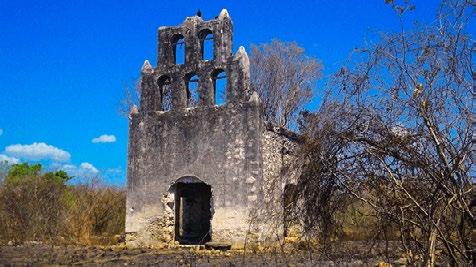
Ciudad Maya . En sus buenos tiempos, la “Ciudad Maya” funcionó como un restaurante y centro de entretenimiento, en la actualidad es un lugar “apagado”. El motivo de su nombre es debido porque en su interior se mandaron a construir réplicas de los edificios arqueológicos de Chichén Itzá como la Pirámide Mayor, el Observatorio, el Caracol e incluso hay una réplica del Cenote Sagrado. En su momento se convirtió en un destino atractivo para los turistas y yucatecos. Los que tuvieron oportunidad de ir cuando funcionaba el establecimiento, comentan que en el día de su inauguración se presentó la vedette Olga Breeskin quien gozaba de una impresionante fama en aquella época. Se dice que orquestas y bailarinas provenientes de Cuba se presentaban en el ex restaurante. Se rumora que, en algún momento, Niurka hizo acto de presencia en la ciudad maya.
Sites that once glowed
As was the case with the Maya ceremonial centers at their apogee, these more recent places were once resplendant but, over time, were abandoned for a variety of reasons. The same is true of contemporary sites, these two abandoned at different times.
Uluch. It is widely believed that the only abandoned place in Yucatán is Misnebalam, but this is not really the case. Uluch was a small town that is currently lost in the mountains. The closest community to this is the town of Cosgaya. Like all henequén (sisalproducing) haciendas, this place once shone because of sisal production, but when the cultivation of that crop ended, the residents abandoned the place. What remains today is a small temple. Inside one finds is an ancient painting and a symbol of an eye surrounded by a triangle (similar to the Illuminati eye or eye of Providence). Maya City. In its heyday, the “Maya City” functioned as a restaurant and entertainment center. Today it is off the beaten path. The reason for its name is due to the fact that it contains replicas of the archaeological buildings of Chichén Itzá, such as the Greater Pyramid, the Observatory, and the Caracol. There is even a replica of the Sacred Cenote. At the time it became an attractive destination for national tourists and Yucatecans, alike. Those who had the opportunity to go when the establishment was in operation, comment that on the day of its inauguration the star Olga Breeskin, who enjoyed an impressive fame at that time, appeared. Live orchestras and dancers from Cuba are performed at the former restaurant. It is rumored that, at some point, Niurka, a performer of renown, made an appearance in the Maya city.
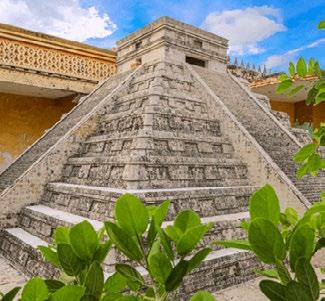


Tradición decembrina yucateca:
Las Ramadas
A partir del 1ero. de diciembre y hasta el 15 del mismo mes, la tradición de los niños yucatecos es salir durante las tardesnoches a cantar las ramadas, una especie de cánticos y villancicos navideños para pedir su “aguinaldo” casa por casa para luego dar inicio a las posadas.

En otros estados de México como Veracruz, Tabasco, Oaxaca, Campeche y Quintana Roo, se le conoce como rama. Centrándonos en Yucatán, todo lo que se recauda en las ramadas es destinado para que se lleve a cabo la posada entre los niños que participaron. De acuerdo con Arquidiócesis de Yucatán, las ramadas surgieron en el siglo XVI cuando los frailes estaban evangelizando a los mayas. Al igual que las posadas, las dos tradiciones son de origen religioso, en específico en el pasaje de la biblia de la peregrinación de María y José en las vísperas del nacimiento de Jesucristo, ya que habían pedido “posada” de una vivienda a otra para que naciera Jesús.
Antes de que los infantes comiencen a cantar en las viviendas, primero se reúnen para adornar las cajas de cartón con imágenes o fotografías de María, José o de otros santos como la Virgen de Guadalupe. En el interior de la caja se coloca una veladora encendida para que ilumine la imagen, mientras que otro niño sostiene una alcancía para que reciba las monedas. La nomenclatura de “ramada” se debe porque los pequeños suelen decorar la caja con ramas de palma o limonaria para simular el arbolito de navidad. Las ramadas se suelen realizarse en todos los rincones de Yucatán, los niños cantan de una casa a otra para que reciban su aguinaldo. La letra de la ramada es alusiva al viaje que tuvieron que realizar los peregrinos antes de que Jesús viera la luz por primera vez.
Yucatecan Holiday Tradition: The Ramadas
Between the first and fifteenth of December each year, it is a tradition for children in Yucatán to go out during in late afternoons and early evenings to sing the Ramadas, a kind of Christmas songs similar to the carolling traditions in the United States and Canada. They go house by house asking for their “Christmas gift,” a cash donation. This is the start of the holiday known as the “posadas.”
In other states of Mexico such as Veracruz, Tabasco, Oaxaca, Campeche, and Quintana Roo, it is known as Ramas. Focusing on Yucatán State, everything that is collected in the ramadas is destined for the posada that the children who participated then enjoy. According to the Archdiocese of Yucatán, the Ramadas emerged in the 16th century when the friars were evangelizing the Maya. Like the posadas, the two traditions are of religious origin, specifically in the biblical passage of the pilgrimage of Mary and Joseph on the eve of the birth of Jesus Christ. They had asked for a posada, or a place to stay for the night, from one house to another just as Jesus was about to be born.

Before the children begin to sing at the houses in the neighborhood, they first gather to decorate the cardboard boxes with images or photographs of Mary, Joseph, or other saints such as the Virgin of Guadalupe. Inside the box a lighted candle is placed to illuminate the image, while another child holds a piggy bank to receive the coins. The nomenclature of “ramada” is due to the fact that the children usually decorate the box with palm branches or lemon trees to simulate the Christmas tree.
Ramadas are usually performed in all corners of Yucatán State. Children sing from one house to another so that they receive their Christmas gift. The lyrics of the ramada are allusive to the journey that the pilgrims had to make before Jesus saw the light for the first time.
Nuevos Deportes en Yucatán Por Agustín Gonzaga
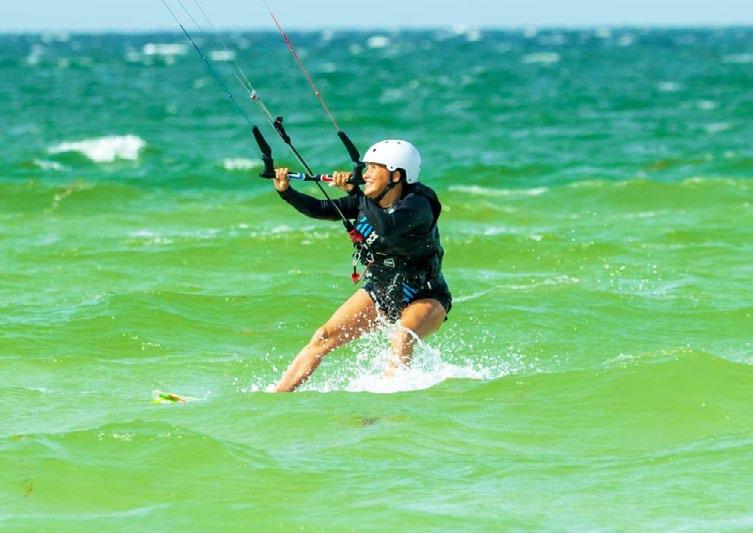
Debido a la situación actual en la que nos puso la pandemia, muchas cosas no solo han cambiado, también se han tenido que adaptar a las circunstancias. Nuestro estilo de vida ha sufrido cambios, pero siempre encontramos alternativas para hacer lo que nos gusta. Por ejemplo, ejercitarse es una de las actividades que se están volviendo una prioridad y se está adaptando a la nueva normalidad.
Ahora buscamos actividades en lugares abiertos como en la naturaleza y sin aglomeraciones. En Yucatán tenemos muchas actividades que se ajustan a la nueva normalidad y que nos ayudarán a tener una vida más saludable y evitar los lugares cerrados.
La apnea o buceo libre (freediving) es un deporte extremo, el cual tiene como base la suspensión voluntaria de la respiración dentro del agua, mientras se recorren largas distancias o se desciende hasta grandes profundidades. La apnea está en crecimiento en la Península, ya que tenemos los escenarios ideales para practicarla. Yucatán cuenta con varias reservas naturales y una gran cantidad de bosque a las afueras de la ciudad, en especial en los pueblos de la Península. El senderismo y el trail running son las alternativas perfectas, tenemos un sinfín de senderos al aire libre rodeados de naturaleza, no solo nos mantendrá en forma, sino que nos hará salir de nuestra zona de confort y conocer más de nuestro Estado. El kitesurf es un deporte extremo de deslizamiento sobre el agua, el viento es un factor determinante porque propulsa Foto: Mike Díaz el “kite” unida a tu cuerpo mediante un arnés, para que navegues en una tabla encima de las olas o realices maniobras en el aire que ni el delfín más saltarín podría realizar. Este magnífico deporte nos mantiene al aire libre y por supuesto, con sana distancia. Puedes practicarlo en las costas yucatecas como Progreso, donde también se encuentran varias escuelas para que puedas realizarlo de manera segura.
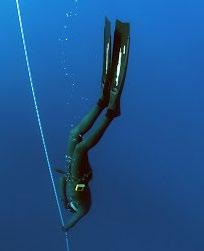
New Sports in Yucatan Por Agustín Gonzaga
Due to the health restrictions Covid-19 warrants, many things have not only changed, also, they had to adapt to circumstances. Our lifestyle has undergone changes, but we always find alternatives to do what we enjoy. Exercising, for instance, is one of the activities that is becoming a priority and is adapting to the new normal.
Now we look for activities in open places like in nature and without crowds. In Yucatán State we have many activities that adjust to the new normal and that will help us to have a healthier life and avoid closed places.
Apnea or free diving (freediving) is an extreme sport, which is based on the voluntary suspension of breathing in the water, while traveling long distances or descending to great depths. Apnea is growing throughout the peninsula, since we have the ideal settings to practice it. Yucatán State has several nature reserves and a large amount of forest on the outskirts of the city, especially in rural towns. Hiking and trail running are the perfect alternatives, we have endless outdoor trails surrounded by nature. Not only will it keep us in shape, but also, we will maintain our comfort zone and learn more about our state.
Kitesurfing is an extreme sport of sliding on water, the wind is a determining factor because it propels the “kite” attached to your body by means of a harness, so that you can navigate on a board above the waves or perform maneuvers in the air that only the most agile dolphin could perform. This magnificent sport keeps us outdoors and of course, with social distance. You can practice it on the Yucatecan coasts like Progreso, where there are also several schools so you can do it safely.
More information at explore.mx
EXPLORELAS HERMOSAS PLAYAS DE LA COSTA YUCATECA


Progreso, Yucatán

Desde el inicio de la pandemia en Yucatán, muchos de los lugares mágicos del Estado cerraron como medida preventiva y así evitar contagios. Muchos deseábamos en ir a las playas, refrescarnos en sus aguas cristalinas, caminar en su blanca arena, sentir la brisa nuestro rostro, degustar de deliciosos maricos frescos, etc. ¿Extrañabas escaparte de la urbanización, tener un día relajado y sin preocupaciones? Te tenemos una excelente noticia…. ¡Ya podrás relajarte en las hermosas playas de la costa yucateca!
Desde el 2 de noviembre, las playas de la costa yucateca fueron reabiertas, así que ya podrás visitarlas siempre y cuando cumplas con las medidas sanitarias como usar cubrebocas, aplicarte gel antibacterial y mantener una sana distancia. Déjanos recomendarte algunas de las tantas playas que hay en la costa de Yucatán y arma tu itinerario de estos destinos turísticos.
Sisal es un puerto pesquero y un espléndido lugar si deseas tener un día relajado y maravillarte con sus escenarios naturales. Entre sus atractivos se encuentra el Fuerte de Santiago, construido con el propósito de proteger al puerto de posibles invasiones piratas, sin olvidar mencionar la ex-Aduana Marítima, el faro y el muelle.
En Las Coloradas podrás dar un paseo en lancha bajo la supervisión de un lanchero quien te dirá datos interesantes de la fauna y vegetación que hay en la ría y en los manglares. Al llegar a las salineras te enamorarás de las aguas rosadas, aprovecha la oportunidad y tómate una foto teniendo a las lagunas como un buen fondo de paisaje. Antes de abordar la lancha, date un “baño maya” con una especie de barro blanco que te dejará la piel tersa.
Sin duda, Progreso es la playa más conocida de Yucatán, un auténtico paraíso con atractivas atracciones como el Malecón Internacional, además de que esta playa cuenta con la distinción de Blue Flag que reconoce su limpieza. En Chicxulub Puerto podrás caminar en su muelle turístico y pesquero. Según con diversos estudios, hace muchos millones de año cayó un meteorito que acabó con la vida de los dinosaurios y debido a su impacto, se formaron los cenotes en la Península de Yucatán.
¡Bienvenido otra vez a las playas de la costa yucateca!
Sisal, Yucatán


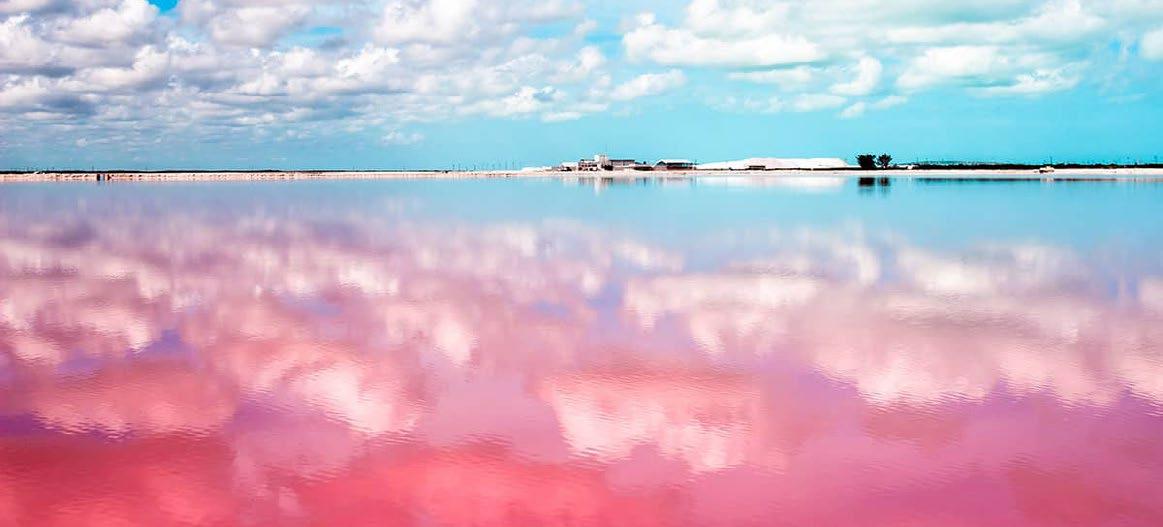
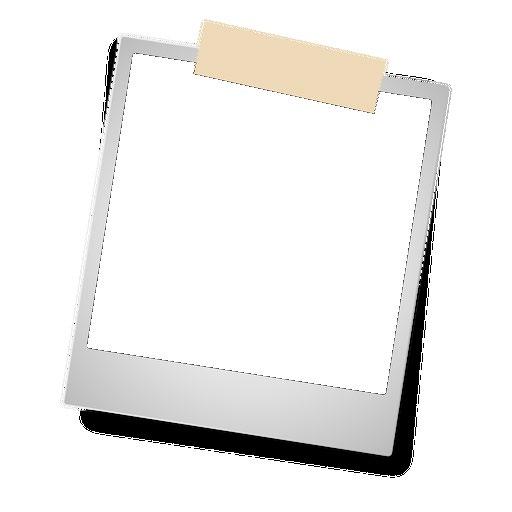
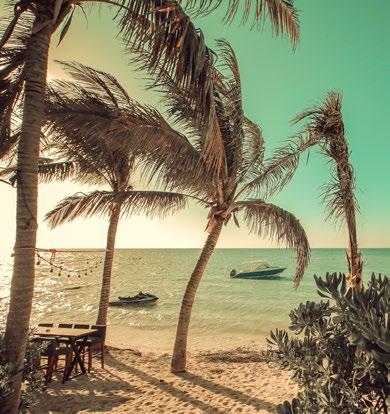
CHICXULUB, Yucatán
EXPLORE the beautiful beaches of Yucatán’s
Since the beginning of the pandemic in Yucatán, many of the magical places in the State have closed as a preventive measure and mitigate the spread of Covid-10. Many of us wanted to go to the beaches, refresh ourselves in its crystal clear waters, walk in its white sand, feel the breeze on our face, taste delicious fresh fish, and so forth. Did you miss escaping from the urbanization, having a relaxed and carefree day? We have excellent news for you…. Now you can relax on the beautiful beaches of Yucatán’s famed Emerald Coast!

As of November 2, the beaches of the Yucatecan coast have reopened, so visitors can enjoy them provided one complies with the sanitary measures such as wearing a mask, applying antibacterial gel, and maintaining social distance. Let us recommend some of the many beaches that are on the Yucatán coast and build your itinerary of these tourist destinations.
Sisal is a fishing port and a splendid place if you want to have a relaxed day and marvel at its natural settings. Among its attractions is the Fort of Santiago, built to protect the port from possible pirate invasions. It’s worth mentioning the former Maritime Customs, the lighthouse, and the pier.
At Las Coloradas you can take a boat ride under the supervision of a boatman who will tell you interesting facts about the fauna and vegetation that exist in the estuary and in the mangroves. When you arrive at the salt mines you will fall in love with the pink waters, take the opportunity and take a photo with the lagoons as a good landscape background. Before boarding the boat, take a "Mayan bath" with a kind of white mud that will leave your skin smooth.
Without a doubt, Progreso is the best known beach in Yucatán, a true paradise with attractive attractions such as the International Malecón, in addition to this beach having the Blue Flag distinction that recognizes its cleanliness. At Chicxulub Puerto, you can walk in its tourist and fishing pier. According to various studies, many millions of years ago a meteorite fell that killed the dinosaurs and due to its impact, cenotes, natural freshwater sink holes, were formed in the Yucatán Peninsula.
Plaza Grande
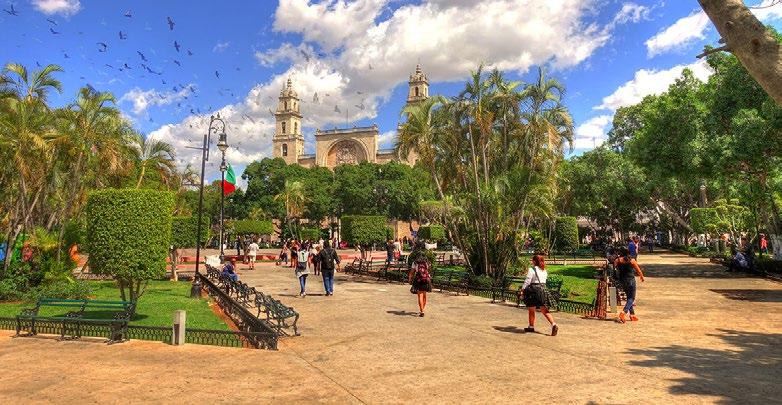
Centro Histórico | Downtown
La ciudad de Mérida fue fundada el 6 de enero de 1542 por Francisco de Montejo y León, “El Mozo”, se edificó sobre las ruinas de la antigua ciudad maya de T’HÓ. Hoy día es el centro de población más grande del sureste mexicano y sorprende a los visitantes con la mezcla perfecta entre la gentileza de sus habitantes y el esplendor de una ciudad moderna que conserva orgullosa sus costumbres y tradiciones.
Merida City was founded on January 6, 1542 by Francisco de Montejo y Leon “El Mozo”, It was built on the site of the ancient Maya ceremonial center of T’Ho. It is today the most populous city in Mexico’s southeast. Merida surprises visitors by offering the conveniences of a modern metropolis while maintaining the feeling of a small-town. Its residents are noted for their friendliness and kindness, who nurture their customs and traditions with pride.
PALACIO DE GOBIERNO
Lun-Vie / Mon-Fri: 9 - 16 h. Gratis / Free Admission. Sus paredes y corredores presumen pinturas del muralista yucateco Fernando Castro Pacheco. / The walls and corridors boast paintings by the muralists Fernando Castro Pacheco, a native of Yucatán. Calle 61 x 60. (Map 1, C3)
OLIMPO
Lun-Sáb / Mon-Sat: 9 - 14 h. Dom / Sun: 9 - 17 h. Gratis / Free Admission. Diseñado por el arquitecto yucateco Augusto Quijano, es recinto de exposiciones y actividades culturales. / Designed by architect Augusto Quijano, it is the venue consisting of both exhibition halls and cultural activities. Calle 62 por 61. (Map 1, C3)
PALACIO MUNICIPAL
Lun-Vie/Mon-Fri: 9 - 18 h. Gratis / Free Admission. Construido en 1735. Admira su sobrio estilo colonial, bonitos balcones y reloj de 3 caras. / Dating to 1735. The building reflects a somber colonial style. It features, ample balconies, and clocks facing three directions. Calle 62 x 61 y 63. (Map 1, C3)
CASA DE MONTEJO
Mar-Sáb / Tue-Sat: 10 - 19 h. Dom / Sun: 9 - 14 h. Noche de culturas / Night of the cultures: 20:30 h. Gratis / Free Admission. Fue la casa del conquistador Francisco de Montejo, el “mozo”. Hoy es museo y sede de un banco. / It was the home of conquistador Francisco “El Mozo” de Montejo. Today the building is a Museum and the regional offices of a bank. Calle 63, entre 60 y 62. (Map 1, C3)
MUSEO DE ARTE CONTEMPORÁNEO (MACAY)
Lun-Dom / Mon-Sun 10-18 h. Gratis / Free Admission. Aloja la colección de Arte Contemporáneo más importante del Sureste de México. También expone en el anexo Pasaje de la Revolución. / This building, is house of the most important collection of contemporary art in southeastern Mexico. It also presents outstanding temporary art exhibitions of contemporary art. Today, it opens onto an annex, the Passage of the Revolution. Calle 60 x 61 y 63. (Map 1, C2)
CATEDRAL
Lun-Dom/Mon-Sun: 7-18:30 h. Video mapping: Sáb/Sat 21 h. Gratis / Free Admission. Es de las más grandes y hermosas catedrales de América y la primera construida en tierra firme del continente americano. / It is one of the largest and most beautiful cathedrals of America, it was the first built cathedral built on the mainland of the Americas. Calle 60 x 61 y 63 (Map 1, C3)
IGLESIA DEL JESÚS / 3ª ORDEN
Mar-Vie/Tue-Fri: 7 - 20 h. Sáb-Dom/Sat-Sun: 7-21:30 h. Gratis / Free Admission. Construida por los jesuitas en 1618; al ser expulsados en 1767, perteneció a los franciscanos de la 3ª Orden. / Built by the Jesuits beginning in 1618; it was occupied by them until they were expelled in 1767, when it was then given to the Franciscans of the Third Order. Calle 60 con 59 (Map 1, C2)
TEATRO PEÓN CONTRERAS
Gratis / Free Admission. De 1908 es el actual edificio, lleva el nombre en honor del poeta yucateco José Peón Contreras. / The current building was built in 1908 and named in honor of the Yucatecan poet José Peón Contreras. Calle 60 con 59 (Map 1, C2)
UNIVERSIDAD AUTÓNOMA DE YUCATÁN
Lun-Vie/Mon-Fri: 9 - 16 h. Gratis / Free Admission. Edificio que fue sede del Colegio de San Pedro. Ahora sólo es sede de algunas oficinas de la Universidad. / The building was headquarters of the College of San Pedro. Today it houses some principal offices of the University staff. Calle 60 con 57 (Map 1, C2)
PALACIO DE LA MÚSICA
Mar-Dom/Tue-Sun: 10 - 16 h. Extranjeros/ Foreign: $150 Nacional/National: $100 *Locales, niños y adultos mayores precio especial. Museo interactivo que difunde la riqueza musical de nuestro país. / Interactive museum that spreads the musical wealth of our country. Calle 58 x 59 (Map 1, C2)
PARQUE DE SANTA LUCÍA
Gratis / Free Admission. Serenata: Jue / Thu 21 h. Bella plazoleta donde se han instalado muy agradables restaurantes y bares. / The beautiful square where a series of excellent restaurants and bars are located. Calle 60 x 59 (Map 1, C2)
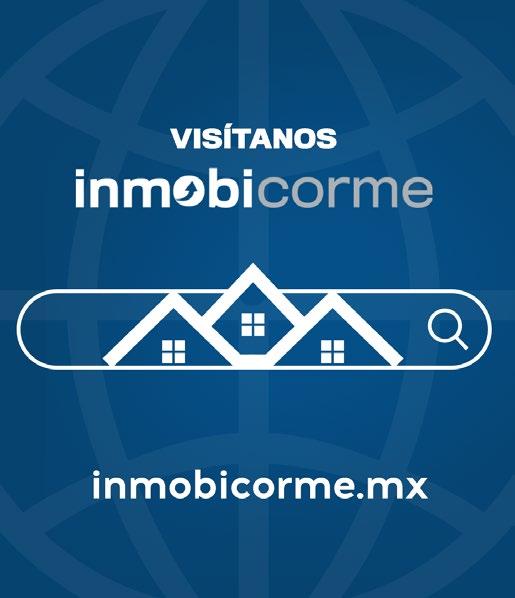


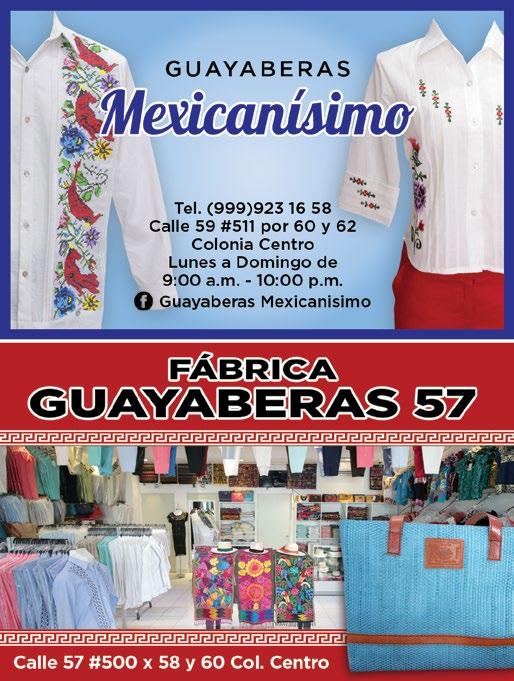
Mapa 1 | Map 1
Centro Histórico
Downtown Center
Santa
Hola Spanish Lucía School María La Tratto
Santiago Súper Calle 70 Parroquia Santiago Calle 68 Calle 66 Del Gobernador Calle 64 José Calle 62 Apoala La Recova
Akí Apóstol Calle 72 Ambassador Antigüedades y Candiles Calle 60 Los Aluxes
Calle 58
· Maison del Embajador · Casa Lucía El Remate Casa San Ángel Calle 54
Calle 56 Calle 51
Calle 53 Calle 52
Gran Real Yucatán
Calle 55
Calle 57
Calle 59
Arte Popular De la Canción Yucateca
Casa de las Artesanías Iglesia de Monjas
Plaza Grande
Ampliación debajo
Zoom below Calle 61
Calle 63
Mejorada
Calle 67 Centro de Atención a Solicitantes
Terminal ADO
Calle 69
Calle 71
Calle 73
La Ermita
Calle 77 Calle 75 Autoprogreso
San Juan
San Juan Bautista
Calle 62
Simbología / Legend
Artesanías / Handicrafts Edificio de Gobierno / Government building Gasolinera / Fuel station Información / information Hotel / Hotel Iglesia / Church Mercado / Marketplace Museo / Museum Supermercado / Supermarket Teatro / Theater Terminal de Autobús / Bus station Renta de autos / Car rental
De la Ciudad
Calle 65
Los Arcos
Calle 69 Lucas de Galvez Calle 54
San Benito
Calle 67
Calle 58
Restaurante / Restaurant Tienda / Shop Escuela / School Parada Turibus / Turibus Stop Calle principal / Main Street ZOOM
Gamma
Calle 57 Chaya Maya
Calle 62 Museo de la Gastronomía Yucateca
Colonial
Artesanaria La Bianca Mérida Veloz Car Maya Casa del Yucatán Balam
Guayaberas 57
Guayaberas Mexicanísimo Cooperativa Yaakun Maya UADY Peón Contreras
Calle 59 Amaro 3a Ordén
Armando Manzanero La Parrilla Mansión El estante de Frida Daniel Ayala Mérida Piedra de Agua Helados Colón Picheta Palacio de Gobierno
Olimpo Catedral San Ildefonso
Casa de Palacio Municipal Plaza Grande Calle 60 MACAY Calle 58
Montejo Palacio de la Música
Calle 61









